Released: 17 March 2023
Director: James Wan
Distributor: Warner Brothers
Budget: $205 million
Stars: Jason Momoa, Patrick Wilson, Yahya Abdul-Mateen II, Randall Park, Temuera Morrison, and Amber Heard
The Plot:
Desperate to find the means to avenge himself against Arthur Curry/Aquaman (Momoa), pirate David Kane/Black Manta (Abdul-Mateen II) stumbles upon the mythical Black Trident, which possesses him and compels him to unleash an ancient threat so powerful Aruthur is forced to join forces with his deposed brother, Orm Marius (Wilson).
The Background:
Back in 1941, Mort Weisinger and Paul Norris created the character of Arthur Curry as part of DC Comics’ (then known as National Comics) desire to capitalise on the success of Clark Kent/Superman and Bruce Wayne/Batman. Although subject to unfair ridicule over the years, Aquaman ultimately had the last laugh when, after years of Development Hell and aborted projects, his live-action debut was met with critical and financial success. Following a short-lived animated spin-off on HBO Max, a planned horror-themed spin-off was thankfully cancelled and a sequel was quickly greenlit; both Momoa and director James Wan were enthusiastic to explore other kingdoms and regions of Atlantis and the vast underwater realm, though the film attracted unwanted media attention when star Amber Heard was accused of abusing her husband, Johnny Depp. Many called for her to be recast and, while Warner Brothers initially shot this request down, it was reported that her role had been significantly reduced as a result of the circus of a trial that followed. The production also stalled due to the COVID-19 pandemic, which changed the release date numerous times but did give the visual effects team more time to work on the film. This apparently also involved excising cameo appearance from one or more Bruce Wayne/Batman actors as James Gunn geared up towards completely restarting the DCEU, with Gunn apparently providing some notes to the filmmakers. After much drama and delays, Aquaman and the Lost Kingdom finally released to largely negative reviews; critics attacked the brainless plot and clunky pacing, though Wan’s direction and Momoa’s enthusiastic performance were praised. As of this writing, the film has currently grossed $340.6 million at the box office but it’s largely academic; Momoa isn’t expected to reprise the role in Gunn’s new DC Universe and no new Aquaman projects have been announced yet, leaving the character essentially dead in the water no matter how much money the sequel makes,
The Review:
I was pleasantly surprised by Aquaman; it was big, colourful, mindless fun in an era when the DCEU was unnecessarily dark and bleak, and it altered Aquaman’s characterisation in a way that made him so much more entertaining and relatable. Jason Momoa attacks the role with such relish and natural charisma that it’s easy to overlook flaws in logic or pacing, and that same charm returns in this sequel. Of course, it helps that he’s disgustingly good looking and absolutely shredded, but Momoa’s Aquaman has the kind of Dude/Bro mentality and whimsical childishness that really brings a smile to my face. In this film, a lot has changed for the slovenly brute who once shunned humanity and responsibility; he’s now the King of Atlantis, doting father to Arthur Junior (Various), and loving husband to Y’Mera Xebella Challa (Heard). First, let’s address the elephant in the room: yes, Mera is in this movie but no, she does not have much of a role. In fact, given all the controversy surrounding Amber Heard, I was expecting Mera to be killed off and it does seem like that almost happened; instead, she’s merely severely wounded by Black Manta and taken out of the second act of the movie, only to make a minor reappearance at the end to help Arthur and Orm and get the baby to safety. I can fully understand this, and it’s not like her presence is really missed; she still impresses in her skin-tight outfit and gets to show off her hydrokinetic powers, but the plot doesn’t require her presence and it’s better she was given less prominence considering everything that happened. Interestingly, much of her character development from the first film is repeated with Orm; he’s prejudiced against the surface world like Mera was, confused by their words and ways, and slowly comes to enjoy some of our customs by the movie’s end, though these lessons are reframed in the context of Arthur encouraging a stronger bond between them and him pulling pranks on his relatively naïve younger brother by tricking him into thinking cockroaches are a delicacy!

So, there’s not much focus on the romance here; even Arthur’s father, lighthouse keeper Tom (Morrison) and Queen Atlanna (Nicole Kidman) don’t share a scene together until the start of the third act, and Arthur’s initial conversations with his father even somewhat imply that Atlanna is dead. She’s not, but her role here is equally minimal and simply the catalyst to unite her two estranged sons into joining forces. Instead, we’re left with Arthur, but that’s more than enough! Despite his big victory in the first film, Arthur is bored by the crown, his duties, and the endless politics of the Atlantean council, which handicap him with bureaucracy. A child of both worlds, he spends as much time out of the sea as he does in it to care for his son, something with many of his kingdom resent, and his desire to reveal Atlantis to the surface world and work with them to reduce pollution and climate change are continuously shot down. Frustrated by self-doubt about his role as a leader, Arthur is almost giddy when David Kane returns armed with a powerful trident of his own and wielding forgotten Atlantean technology. Kane’s plot to steal Atlantis’s highly volatile stockpiles of Orichalcum and exacerbate the heating of the world (which also causes a deadly plague to kill many Atlanteans, including Arthur’s mentor, Nuidis Vulko (Willem Dafoe), between movies) causes Arthur great distress. With no way of tracking Black Manta, Arthur enlists the help of King Nereus (Dolph Lundgren) and Topo the octopus to sneak into the desert prion where Orm is held captive and enlist his help since he’s the only one who may be able to lead them to Kane. Arthur jumps at the chance for some action, even if it risks all-out war breaking out, as he’s desperate to get into the thick of it again, to say nothing of trying to connect with his brother and settle the score with his old rival.
This dysfunctional dynamic is where the heart of Aquaman and the Lost Kingdom lies, and where much of its entertainment value comes from. Emaciated from his time in prison and embittered by his brutish brother’s lack of decorum when it comes to the throne, Orm is depicted as a conniving, untrustworthy bigot who lusts for power. Yet he agrees to help Arthur, and even stats he will willingly return to custody afterwards, out of loyalty to Atlantis, and never misses an opportunity to chastise his brother’s buffoonery and overreliance on his muscles. Orm emits a more stately persona, attempting to use diplomacy rather than brute force; he’s able to lead them to an underwater den of debauchery and an aquatic crime boss, the appropriately named Kingfish (Martin Short), to get information on Black Manta’s location and even drops condescending advice to Arthur about what it means to be a king. The banter and bickering between Arthur and Orm is great; Orm is visibly disgusted by his older brother, and the humiliation he felt at his hands, while Arthur tries to win him over with his boisterous personality and surface world benefits such as beer and cheeseburgers. Although King Nereus cautions about trusting Orm, the former Ocean Master proves surprisingly reliable; he never runs from a fight, doesn’t attempt to kill or sell out Arthur, and doesn’t even show envy at learned Arthur married Mera. Although it seems like Orm is happy to leave King Nereus to die, he saves the king and earns his respect in the process, and even readily joins Arthur in battling Black Manta when he could easily slip away and let them kill each other. Orm proves equally invaluable in delivering exposition about the Black Trident and the titular lost kingdom of Necrus, though the two brothers are briefly set against each other in the finale when Orm claims the Black Trident and briefly falls under its malicious sway.
Established in the first film as a vengeful, sadistic mercenary, David Kane has become obsessed with discovering the secrets of Atlantis so he can repair his Black Manta suit and avenge himself on Aquaman. Kane’s fascination with Atlantis is shared by his reluctant scientific advisor, Doctor Stephen Shin (Park), who’s longing to see Atlantis is manipulated by Kane into helping him figure out Necrus’s ancient weapons. Once he finds the Black Trident, Kane is bombarded with visions, promises of power, and a superhuman lust to free the imprisoned King Kordax (Pilou Asbæk), who’s dark magic slowly infests Black Manta and drives him to the brink of insanity. Even Orm is stunned to learn of Black Manta’s newfound viciousness, which sees him threaten the entire world with climate instability simply for the sake of it rather than for any kind of ransom, and Kordax’s influence means Black Manta can now go toe-to-toe with both Aquaman and Orm without his power suit. However, he still utilises his technology, blasting his enemies with beams of intense energy and combines both science and magic (and a massive disrupter cannon on a repurposed Necrus ship) to showcase his new might. Black Manta’s need to awaken King Kordax and his list for revenge are so powerful that he targets Arthur’s family, critically wounding Mera and Tom and even kidnapping his son with the intention of using his blood to destroy the magic seal imprisoning the undead king. As for King Kordax, he’s more of an ethereal spirit, a ghastly skeletal wraith who whispers in Kane’s ear, possesses any who touch the Black Trident, and formally commanded a legion of undead warriors in battle against his brother, King Atlan (Vincent Regan). Desperate to return to unlife once more, he feeds the ego of whoever wields the Black Trident, compelling them to spill the blood of Atlan’s bloodline so that he and his army can ransack the entire globe!
The Nitty-Gritty:
Aquaman and the Lost Kingdom charts the natural next chapter in Arthur’s story; this loveable manchild feels increasing pressure on all sides to grow up and be more responsible as a husband, father, and leader, roles that he attacks with his usual juvenile vigour but which he finds himself questioning at times. Though devoted to his family, he finds the politics of the crown tedious and expresses dissatisfaction with the role, which he only fulfils out of obligation to his mother and his people. There’s no question that he’s a good father (indeed, Tom encourages Arthur to have more children!) or that he wants what’s best for Atlantis, but he desires a worldwide unity that the council aren’t willing to risk and struggles to balance both sides of his life. These issues are explored through his tumultuous relationship with Orm; both were denied a childhood together and are wary, if not frustrated, by each other, with only their love for Atlanna and Atlantis keeping their fragile alliance alive throughout most of the film. They’re two halves of the same coin, though, and both learn a lot from the other; Arthur learns more about what it takes to be a king and Orm learns to not be such a dick and enjoy other cultures. However, while they’re one of the best parts of the film, I would’ve liked to see a little more of this; perhaps a scene or two where Orm does abandon Arthur, or one where Arthur’s knowledge of the surface world helps Orm, or seeing Orm’s stoic disdain crack upon learning that he’s an uncle. The galvanising love show to them both by Atlan helps fill these gaps, as does the presence of King Nereus and the Brine King (John Rhys-Davies), who have their own issues with Orm, but it does feel like some scenes were left on the cutting room floor to keep the pace up.
Not that that’s a bad thing; Aquaman and the Lost Kingdom has a very brisk pace that doesn’t waste too much time, but it’s also learned to not interrupt every character moment with a dramatic explosion (there’s even a tongue-in-cheek reference to that at one point. The underwater realms are as captivating as ever, being a neon-drenched wonderland of strange, almost monstrous undersea races and futuristic technology alongside rusted apparatus and long forgotten ancient ruins. Aquaman’s ridiculously good orange/gold armour returns, looking better than ever, and he even gets a sleek, form-fitting black/blue suit and makes him invisible for a few moments at a time, perfect for sneaking into the arid desert prion and battling the dried-out, horrifying guards who dwell there. Although Orm is shafted in the costume department this time around, Mera still catches the eye in her tight little number and Black Manta steals every scene in his ludicrous saucer-like helmet. The fight sequences are much more intense this time, too; moving away from full-scale undersea battles to focus on gritty melee combat, the fights between Aquaman and Black Manta are great now that Kane has received a power boost and is a significant threat able to hideously burn even Atlantean flesh. There are a fair few visually interesting locations on offer as well, from the throne room and market square of Atlantis to the scorching desert and the overgrown, hazardous forest on Black Manta’s island (complete with volcano lair) thanks to the presence of polluting Orichalcum. A fair bit of the film involves ice and frozen locations, too, with Necrus and his army encased in an icy tomb, but overall I found the CGI and action sequences to be really well done; perhaps a bit less bombastic at times, but the focus on crafting meaningful fight scenes benefitted the plot greatly, I feel.
Despite working surprisingly well as a team, Arthur and Orm are unable to defeat Black Manta; they disrupt his operation, with the help of the remorseful Dr. Shin, but find Kane is willing to sacrifice Arthur Junior to set King Kordax free, leading to a more concentrated assault against Black Manta and the quickly rising undead army of the entrapped king. Determined to save his son, Aquaman battles Black Manta once more, only to find Kane has been fully overtaken by the malicious Kordax. Luckily, Mera and Orm are both on hand to get the baby to safety, but Orm falls under Kordax’s spell when saving Mera and his nephew from certain death. Although it seems like the two brothers are about to fight once more, Arthur tries a different approach, one influenced by his time with Orm and his desire to build bridges between them. Instead of fighting, Arthur also grabs the Black Trident and tries to reason with his brother, with both struggling against Kordax’s influence, and successfully talks Orm down. Orm then provides Arthur with the means to destroy the awakened undead king and finally acknowledges him as his brother in the aftermath, where all involved agree to say that Orm perished in the battle as thanks for his help. With Orm out exploring the surface world for the first time, Arthur makes the decision to finally reveal Atlantis to humanity, directly addressing the United Nations and calling for a global effort in reversing the damage done to the environment and thus ending the DCEU on a surprisingly hopeful message. Sure, the climate change aspects of the film are a little ham-fisted, but I think they’re to be expected in an Aquaman story, especially as suspicion of humankind is such a prominent aspect of the mistreated Atlanteans.
The Summary:
I was excited for an Aquaman sequel; I’ve loved Jason Momoa in the role right from the start and really enjoyed the first film, so it bugged me that Aquaman and the Lost Kingdom was delayed and pushed back and mired in controversy and said to be awful. It really isn’t, to be fair; it’s not as good as the first (though repeated viewings may change that opinion) but it’s not an incomprehensible mess, an ugly noise of awful CGI, or a lacklustre bore-fest either. It’s a fun, thrilling, and surprisingly intense adventure; Black Manta’s vendetta against Aquaman is deeply personal, as are the issues between Arthur and Orm, and the performances of those three actors really sell that. Kane is a cold-blooded, merciless pirate who blood on his mind; Orm is a bitter and resentful fallen king; and Arthur is just trying to do the right thing but struggling with his suitability to the throne. While the actors all do a fantastic job of embodying their roles, the visual effects are absolutely top-notch; I love seeing these characters come to life, Atlantis is a gorgeous undersea society, and the various dishevelled ruins and repurposed technology really give a sense of scale and time to this world. The bickering between Arthur and Orm more than makes up for Mera’s dramatically reduced role and makes this more of a dysfunctional buddy comedy at times, but the more personal and fierce fight sequences are just as appealing to me. It’s shame that the DCEU died out so quickly; I don’t relish having to restart Aquaman’s story and find a new actor for the role, but at least we have these two movies to show us what the character is capable of in the right hands. Ultimately, Aquaman and the Lost Kingdom may not be the best DCEU or superhero movie you’ll ever see, but I think it’s definitely high in the ranks and worth your time for the lead actor alone, but there’s plenty to enjoy beyond that if you’re simply looking for a fun and surprisingly intense action film.
My Rating:
Great Stuff
Did you enjoy Aquaman and the Lost Kingdom? How do you think it compares against the first film and other DCEU movies? Did you enjoy Jason Momoa’s performance and Arthur’s relationship with Orm? Were you glad that Arthur Junior was spared the fate of his comic book counterpart? What did you think to Black Manta and his newfound power boost? Were you annoyed by the climate change plot, or did you find it suitable for the film? Who would you like to see portray Aquaman in James Gunn’s new DC Universe? Whatever your thoughts on Aquaman and the Lost Kingdom, and Aquaman in general, drop a comment below or on my social media.











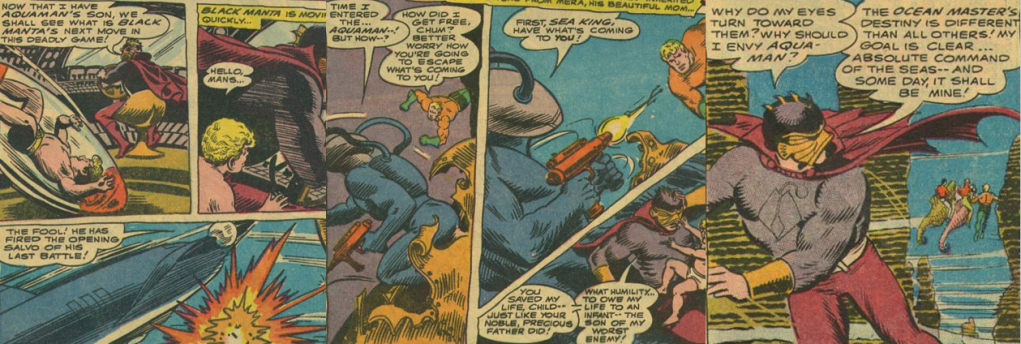


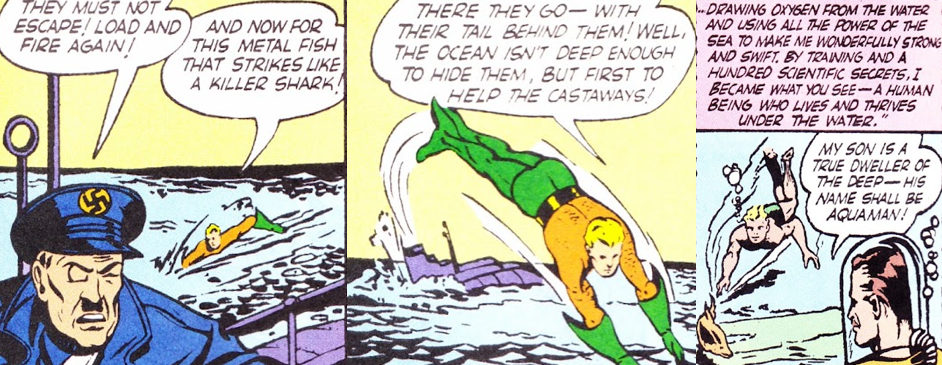









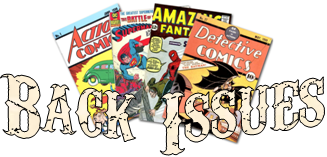
























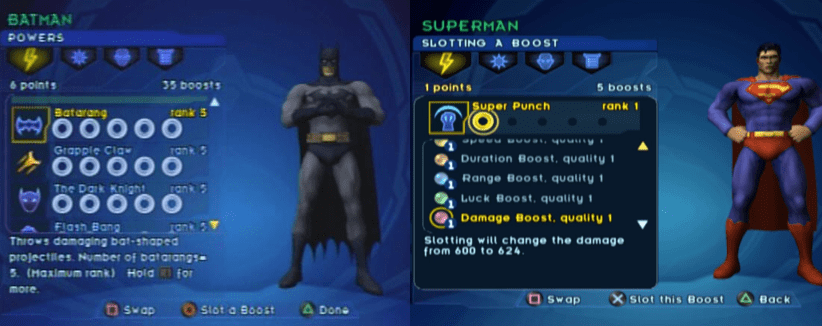





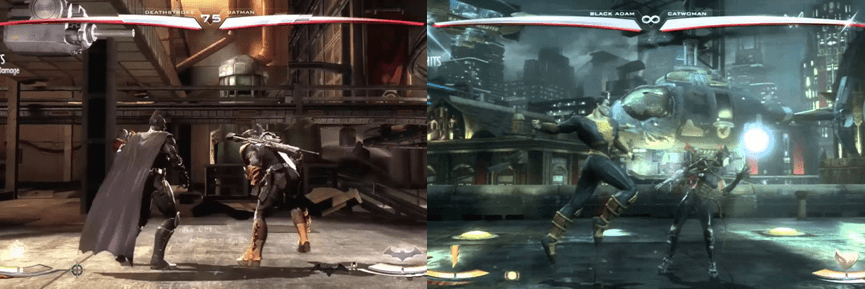













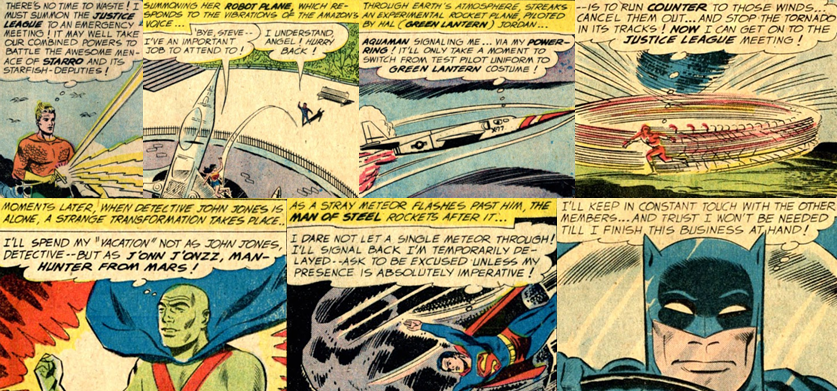




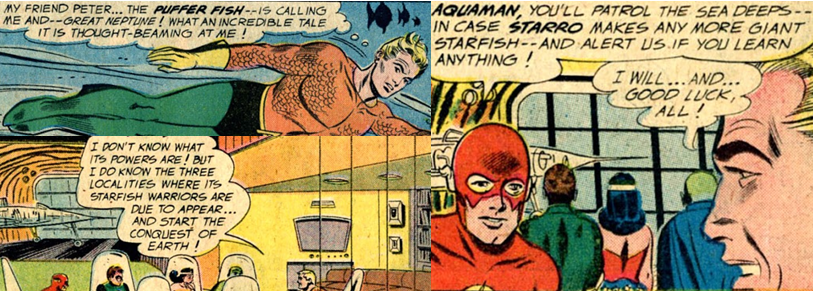





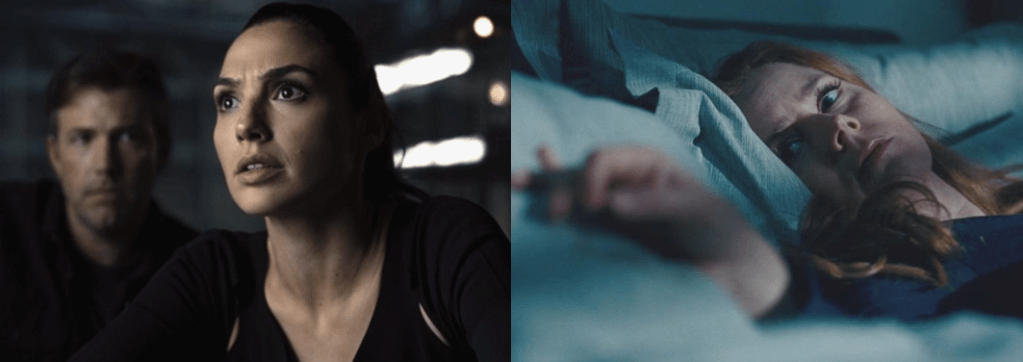











You must be logged in to post a comment.